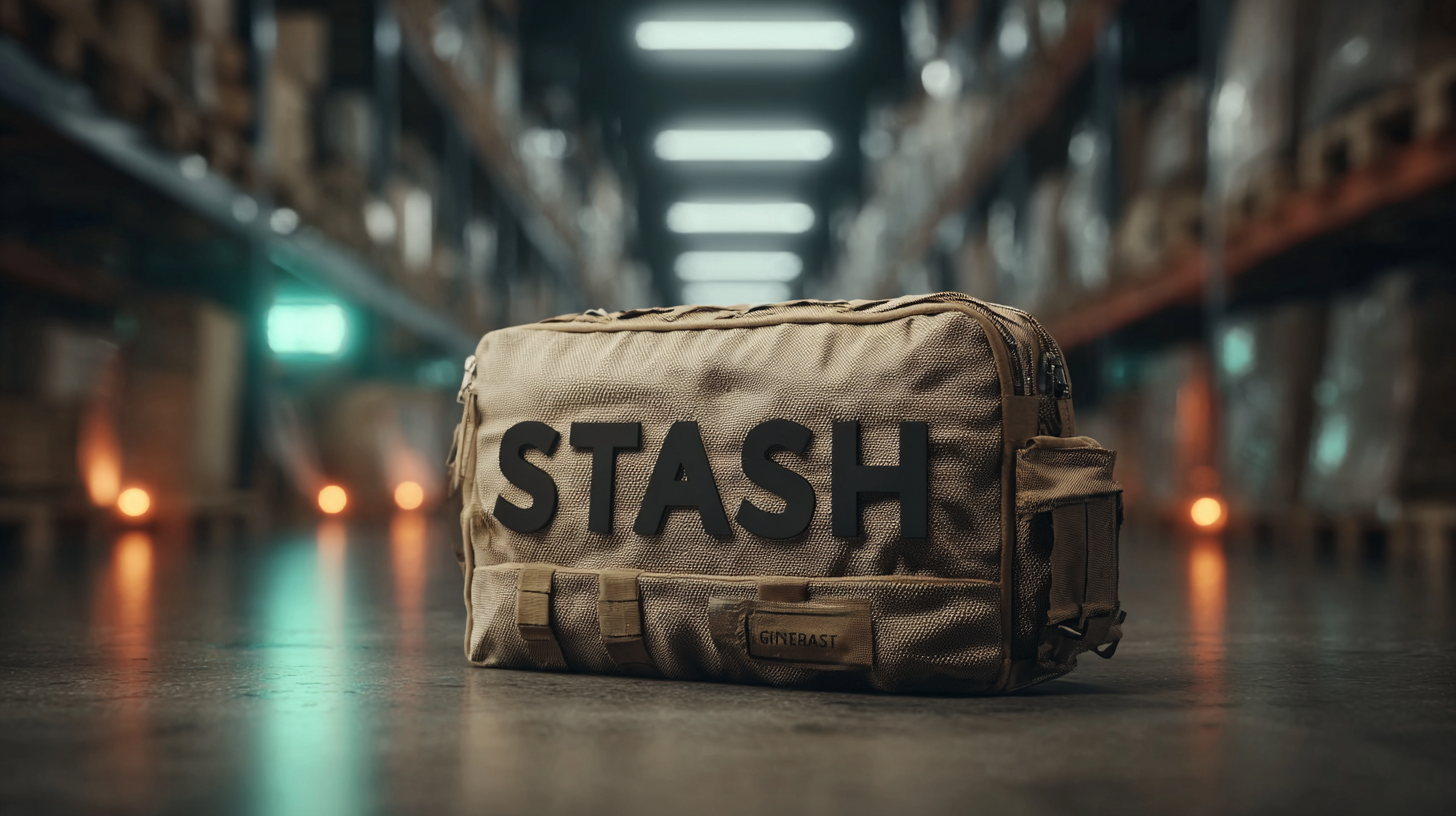 +86-18620643668
+86-18620643668 


In the ever-evolving landscape of supply chain management, the year 2025 is set to unveil groundbreaking technology trends that promise to redefine industry standards and operational efficiencies. Among these advancements, the lightweight and versatile "Stash Bag" is emerging as a game-changer, offering innovative solutions for inventory management and distribution logistics. This blog will delve into the numerous applications of Stash Bags within various sectors, showcasing real-world case studies that highlight their impact on productivity and cost-effectiveness. By integrating digital technologies with smart packaging solutions, businesses can streamline their supply chains, enhance mobility, and improve sustainability.

Join us as we explore the reasons why Stash Bags are becoming indispensable tools in the modern supply chain ecosystem, and how they align with the future trends that will shape the industry.
As we look towards 2025, several emerging technologies are set to revolutionize supply chain management. Advanced analytics, artificial intelligence, and blockchain are just a few innovations making waves across the industry. By leveraging data insights, businesses can enhance visibility, optimize inventory levels, and improve decision-making processes. This tech-driven approach can lead to significant cost savings and increased efficiency.
**Tip:** To stay ahead of the curve, consider investing in training programs that educate your team about these technologies. Understanding how to effectively utilize tools like AI can help companies streamline operations and enhance collaboration across supply chains.
Another critical trend is the integration of IoT (Internet of Things) devices, which allow for real-time tracking of goods. This enables businesses to monitor shipments with unparalleled accuracy, leading to proactive measures against potential disruptions.
**Tip:** Implement a robust IoT strategy by identifying key performance indicators (KPIs) that align with your supply chain goals. This focus will help you to not only track performance effectively but also to make informed adjustments as necessary. Embracing these technologies will position companies for success in the rapidly evolving landscape of supply chain management.
In the rapidly evolving landscape of logistics, advanced stash bags have emerged as essential tools for supply chain efficiency. These innovative bags enhance the organization and mobility of goods, ensuring that items are readily accessible while maintaining security during transport. Their robust design offers protection from environmental factors, minimizing the risks of damage to sensitive products. With features such as RFID tags, these stash bags can streamline inventory tracking, reducing the time spent on manual counts and enabling more accurate supply chain management.
Another significant advantage of utilizing advanced stash bags in logistics operations is their contribution to sustainability. Many of these bags are designed with eco-friendly materials, facilitating a reduction in plastic waste. By opting for reusable stash bags, companies not only lower their environmental footprint but also cut costs related to packaging. Additionally, their customizable nature allows businesses to reinforce branding while maintaining a practical approach to storage and transport, making them an ideal solution for modern supply chain challenges. These bags exemplify how technology can improve logistics operations, offering tangible benefits that enhance overall productivity and sustainability in the industry.
As we delve into the 2025 technology trends reshaping supply chain management, innovative solutions such as the Stash Bag are gaining momentum. These bags are not just storage solutions; they represent a pioneering approach to operational efficiency by optimizing inventory management and enhancing mobility within warehouses. For instance, companies are leveraging Stash Bags that integrate RFID technology, allowing for real-time tracking of items. This advancement enables seamless inventory audits, reducing errors and improving overall productivity.

In practical applications, several organizations have successfully adopted Stash Bag innovations. A leading e-commerce retailer implemented these bags in its distribution centers, significantly streamlining the picking process. By utilizing color-coded Stash Bags for different product categories, employees experienced a marked reduction in search times, ultimately speeding up order fulfillment. Additionally, a major automotive manufacturer began using reinforced Stash Bags in its assembly line, protecting sensitive components while providing easy access during production. These real-world examples illustrate how adopting Stash Bag technology not only enhances operational efficiencies but also contributes to a more agile and responsive supply chain.
In today’s fast-paced supply chain landscape, data analytics is emerging as a pivotal tool for enhancing efficiency. According to a report by McKinsey, companies that fully leverage data analytics can improve their operational efficiency by up to 30%. This statistic underscores the importance of integrating advanced analytics into supply chain processes to optimize inventory management, forecast demand accurately, and streamline logistics operations. By harnessing big data, organizations can make informed decisions that not only reduce costs but also elevate customer satisfaction.
Tip 1: Invest in robust data analytics tools that allow for real-time tracking of inventory levels and shipment status. This enables businesses to respond swiftly to market changes and avoid stockouts or excess inventory.
Tip 2: Encourage collaboration between departments by sharing insights from data analytics. For instance, aligning sales and inventory management teams can ensure that demand forecasts are accurate and reflective of market conditions.
The continual evolution of technology in supply chain management means that data analytics is no longer optional; it is essential for staying competitive. By adopting a data-driven mindset, companies can significantly enhance their supply chain efficiency, which is crucial as we approach 2025.
The concept of sustainability has increasingly permeated the design of stash bags, reflecting a significant shift in supply chain practices. According to a 2022 report by McKinsey, over 70% of consumers now prioritize sustainable packaging solutions when making purchasing decisions. This rising consumer awareness encourages manufacturers to innovate their stash bag designs, incorporating materials like recycled plastics and biodegradable fabrics. Sustainable stash bags not only reduce environmental impact but also enhance brand loyalty, as companies that adopt eco-friendly practices are perceived more favorably by consumers.

Moreover, sustainability trends extend to the entire supply chain management process. The Ellen MacArthur Foundation reported that transitioning to a circular economy could generate $4.5 trillion in economic benefits by 2030. As businesses seek to optimize their supply chains, the integration of sustainable stash bags can streamline logistics while promoting eco-conscious practices. Companies are increasingly investing in closed-loop systems that ensure materials are reused, minimizing waste and resource consumption. By aligning stash bag production with sustainability objectives, organizations can meet regulatory compliance and truly reflect their commitment to environmental stewardship.
